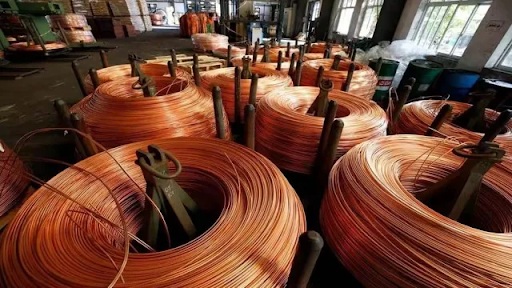In 2025 India’s copper industry sits at an inflection point. Strong domestic demand driven by electrification, renewables, and electric vehicles (EVs) is colliding with a historically import-dependent supply chain and a wave of capacity-expansion plans from both public and private players. The result: a market that looks set for sustained growth, but one that will require pragmatism on policy, logistics and investment to convert potential into stable domestic supply.

Demand: structural growth, not a short-term blip
Copper demand in India has been rising rapidly. Recent industry studies report double-digit year-on-year growth in overall copper consumption, with FY24 showing a significant jump (driven by infrastructure, renewable installations and consumer electronics). Renewables, electrified agriculture pumps and EV penetration are the biggest demand accelerants—each uses substantially more copper per unit than legacy technologies, so incremental capacity additions translate into outsized incremental copper demand.
Supply: constrained but expanding
Domestic mined output has improved modestly, but India remains a net importer of refined copper and copper concentrates. State-owned Hindustan Copper (HCL) and private majors (notably Aditya Birla’s Hindalco group and the large conglomerates moving into metals) are pursuing aggressive expansion plans — HCL has signalled stepped-up ore production targets and re-opening of brownfield assets, while Hindalco has been publicly clear about multi-billion dollar investments in metals capacity. These projects, if executed on schedule, will reduce import dependence over the medium term but will take years to fully ramp.
Policy and industrial push
Government documents and sector vision notes from the Ministry of Mines are prioritising upstream capacity growth, mine auctions, faster clearances and incentives to build smelting/refining capacity — all aimed at improving domestic self-sufficiency and creating jobs in mineral-rich regions. The push to localise “critical minerals” capacity complements India’s broader industrial policy and clean-energy ambitions. That policy intent is encouraging for capital investors, but implementation and permitting timelines will be decisive.
Market structure and key players
The market is a mix of legacy public miners, integrated private conglomerates and port-based smelter/refinery complexes that import concentrates for local refining. Hindalco and its affiliates remain among the largest industrial forces shaping copper capacity and downstream fabrication volumes; public entities like Hindustan Copper are critical for domestic mine expansion. Meanwhile, recent corporate presentations and filings show companies continuing to prioritise copper alongside aluminium and downstream product lines.
Challenges — logistics, feedstock and environment
Three structural risks stand out:
- Feedstock dependence: India imports a large share of copper concentrate and refined copper. Global concentrate availability and sea-freight dynamics will affect domestic margins and continuity.
- Project execution risk: Large greenfield and brownfield projects take years; delayed commissioning or cost overruns would keep import dependence high and create short-term tightness.
- Environmental and social licensing: Copper mining and smelting are capital-intensive and environmentally sensitive. Stronger environmental scrutiny—while necessary—can extend timelines and raise capital costs.
Opportunities and investment themes
- Electrification supply chain: Transformers, cables, and EV motors will remain high-growth copper end-uses — firms supplying wire rod, electrolytic copper and specialized alloys will benefit.
- Recycling and secondary copper: With rising scrap availability and sustainability pressures, secondary/refined copper and recycling investments are attractive margin plays.
- Port-linked smelters: Plants sited near ports that can import concentrates and export refined product are strategically advantaged; expect more capacity concentrated around western and southern ports.
Outlook for 2025–30 (practical view)
Expect demand to continue outpacing current domestic refined production in the short term (2025–27). However, if announced capacity expansions and mine developments progress as planned, India should see a meaningful reduction in import dependency by the late 2020s — not elimination, but a structurally stronger domestic supply base. Investors and policymakers should prioritise: faster permit processing, incentives for downstream refining, and logistics upgrades to avoid a choke point between mines and smelters.
What businesses should do now
- Downstream fabricators and cable makers should hedge feedstock via long-term offtakes and diversify suppliers.
- Renewable and EV OEMs must factor copper availability and price volatility into product costing.
- Investors should favour companies with integrated value chains (mine→smelter→refinery→downstream) and demonstrated project execution capability.
Bottom line:
India’s copper industry in 2025 is a growth story with caveats. Demand fundamentals are robust and long-term secular (electrification + renewables + EVs). Supply-side transformation is underway, but execution, feedstock logistics and environmental licensing will determine whether India turns potential into a reliably greener, more self-reliant copper value chain.

